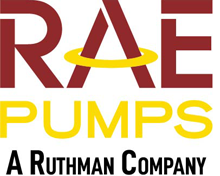Replacement Pump Shopping
By on
Quickly identify the right pump to get your tooling equipment back up and running
When a machine goes down due to a pump failure that can’t be repaired, you need to identify a replacement quickly to minimize downtime. The question is, among the various brands and hundreds of models out there, how do you quickly find the right one?
Exact replacement of brand and model may seem the easiest path but can often cost you more downtime and money than you want to part with. Shopping for an equivalent pump from RAE may get you up and running more quickly and bring you better value overall. Here’s how to find the pump you need.
Identify the RAE Series
The most obvious starting point is to identify the pump brand and series you currently have and match it to the comparable series from RAE. This chart provides a starting point for some of the most common pump brands and series. Once you’ve identified the correct RAE series, you can skip ahead to Find the Right Model.
If you can’t identify the original pump brand or don’t know the RAE comparable series, you’ll have to do a little more detective work. This page provides a summary of all the RAE pumps.
First, select the category of pump you are replacing. Within RAE’s Multistage pump offerings they are several series available under the categories of Vertical Immersion, Vertical External Mount, and Horizontal; as well as single stage Sealless Vertical Immersion pumps.
Next, look at the gpm and psi condition point ranges for each series to find the range that covers your machine’s operating parameters. Now that you’ve identified the series, it’s time to find your model.
Find the Right Model
An important thing to remember when shopping replacement models is that you should be looking to match the pump condition points, not necessarily the exact pump construction. For example, while the SPK Series from Grundfos is comparable to RAE’s GTPK Series; a 2 impeller, 4 stage model in one line may or may not have the same operating parameters as the 2 impeller, 4 stage model in the other line.
From the Series, narrow down further to the model/s with the gpm and psi condition point range that covers your machine’s operating parameters. Examine the pump curve to identify the number of impellers needed to best meet your operating conditions.
Several multistage pumps come with multiple model configurations, with null or empty stages used to achieve additional column length needed for a particular application. Once you’ve identified the model, check the pump dimensions to find the exact model configuration that will provide a drop in pump replacement for your machine.
Need More Help?
RAE’s applications experts are available to assist you in finding the right replacement pump for your machine, and can provide stock level and lead time information. Contact our experts.
Leave a comment
You must be logged in to post a comment.

0 responses